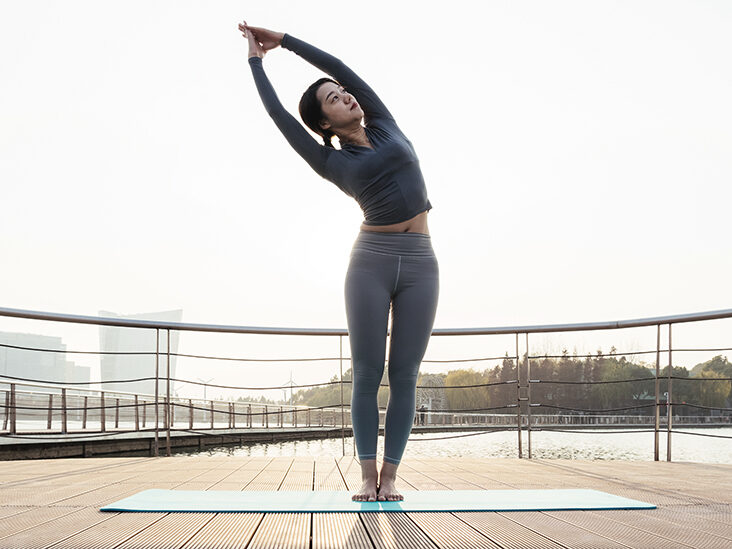
You may not be aware of all the benefits of stretching. For instance, stretching can prevent injuries and increase your flexibility.
But other benefits of stretching are also widely known, including a reduction in stress and tension headaches.
Also known as biofeedback exercises, stretching has been proven to reduce stress and tension. So, how can you get the most out of stretching?
Listed below are some tips for achieving optimal results.
Stretching reduces the risk of injury
Regardless of whether stretching is beneficial for preventing injury, it is important to perform stretches properly. If done incorrectly, stretching can increase the risk of injury or decrease performance. In addition to injury prevention, stretching can help reduce soreness and improve range of motion.
When done properly, stretching can increase muscle performance and help prevent injury. To learn more, read on for some tips. You can stretch before, during, and after physical activities to prevent injury.
While many exercisers believe stretching reduces the risk of injury, research has not confirmed this. Several randomized controlled studies have found that stretching increases overall flexibility without increasing injury risk. These studies were performed with soldiers doing military exercises.
Nonetheless, the benefits of stretching appear to outweigh the risks. The Better Health Channel found no significant differences between stretching and control groups in sports, so it is advisable to perform stretches before high-impact activities, especially before the start of a physical activity.
Improves flexibility
Among the many benefits of increasing your flexibility are more ranges of motion. Most everyday activities require some degree of flexibility. For instance, bending over, squatting, and leaning over all require flexibility. Stretching will help you achieve those goals.
A regular stretching routine can reduce stress and improve body movement. By improving flexibility, you can also enjoy better posture and avoid injury.
When it comes to stretching, anything that stretches your muscles or connective tissues will work. Generally, the more frequently you stretch, the better. Aim for about two to three days of stretching each week, but if you're busy, you can skip a day or two.
Even just 15 minutes a day will do wonders for your flexibility. But you shouldn't forget to include some gentle exercise as well.
Reduces stress
Most of us spend most of our time at our desks, and we don't spend enough time maintaining our physical well-being. Stretching can help you reduce stress by relaxing your muscles and relieving some of the accumulated tension.
Stretching also loosens up your back, shoulders, and legs, and helps improve blood circulation. It can also improve your mood by promoting relaxation and improving your energy levels. Try to schedule some stretching time each morning before you leave for work.
Begin by laying on your back with both knees bent and your feet flat on the floor. With your right knee, lift it up toward your chest until you feel a pull in the back of your thigh. Then, stretch your left leg as far out as possible and repeat on the other side.
Repeat the whole exercise several times a day. By following a few simple stretches every day, you will find that your body will thank you later.
Reduces tension headaches
While tension headaches aren't usually life-threatening, they can be uncomfortable and interfere with your daily life. Thankfully, there are many natural solutions for this common ailment.
You can also look online for videos of basic stretching routines. While tension headaches are not generally a cause for concern, they can be the first sign of a serious condition.
The opposite of stretching, shortened position techniques are also effective for relieving tension headaches. Essentially, these techniques allow your muscles to rest, like you would a person cooling off by putting their head against a cold surface. Hold this position for two minutes and then repeat. It's recommended that you do this exercise three to four times per day, at least once a day.
After you've completed the four stretches, you can relax your body and reduce your tension headaches.
Reduces low-back pain
One way to prevent lower-back pain is to stretch regularly. According to Karen J. Sherman, PhD, a professor at the Group Health Research Institute in Seattle, stretching can significantly reduce pain. This study included 228 participants with at least moderate low-back pain who were enrolled in a clinical trial.
To qualify for this study, the participant's pain had to last for at least three months. The study was funded by the National Center for Complementary and Alternative Medicine.
The bridge pose aims to lengthen the sit bones and soften the sacrum. It also activates the lower portion of the gluteus maximus, the muscle that supports the low back. Begin by placing your feet hip-width apart and your heels on the floor. Gently press your feet into the floor, lifting the pelvis and lowering your back.
Do this 10 times, then switch between these two positions. Although there are several causes of low-back pain, the most common cause is muscle sprains and strains.
References
11 Benefits of Stretching for Everyday People



























